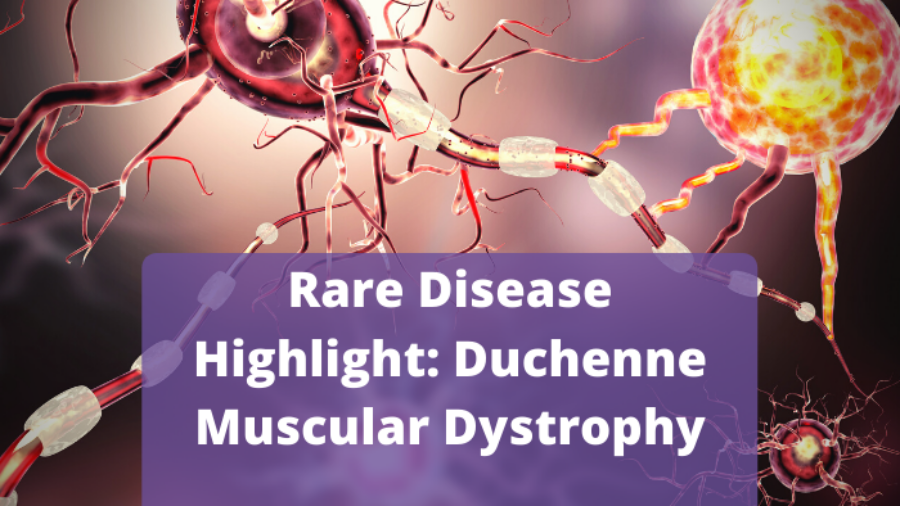Duchenne Muscular Dystrophy (DMD) is a rare degenerative disease affecting neuromuscular abilities (Asher et al., 2020; Baker, 2017; Crisafulli et al., 2020). DMD is linked to the X-chromosome, meaning it primarily affects males, while females act as carriers of the disease (Baiardini et al., 2011; Crisafulli et al., 2020; Sussman, 2002). DMD affects approximately 1 in every 3,500 newborn boys in the US (NORD, 2016). The cause of DMD is a mutation in the dystrophin gene (NORD, 2016). This gene is responsible for the production of the dystrophin protein, a structural protein needed for stabilization and maintenance of the myofibers in the membrane of muscle cells, which is vital for muscle growth (Dalakas, 2017). The absence of dystrophin results in muscle degeneration, inflammation, and fibrosis, leading to the loss of skeletal muscle mass, which is replaced by fibrous and fatty tissue (Rugowska et al., 2021; Sussman, 2002).
Symptoms of DMD become apparent in early childhood when there are delays in reaching developmental milestones (Asher et al., 2020; NORD, 2016). Children present muscle weakness, spinal deformities, a waddling manner of walking, abnormal standing posture, loss of ambulation, and clumsiness (Baiardini et al., 2011; Birnkrant et al., 2018; Dalakas, 2017; Sussman, 2002). Additionally, DMD patients have difficulty walking, running, climbing stairs, jumping, and getting up from the floor (known as Gower’s sign) (Birnkrant et al., 2018; Crisafulli et al., 2020; Rugowska et al., 2021; Sussman, 2002). In addition to physical symptoms, patients with DMD can also exhibit cognitive and behavioral complications, such as intellectual disabilities, attention deficit hyperactivity disorder (ADHD), and disorders within the autism spectrum (Bylo et al., 2020; Crisafulli et al., 2020). Patients with DMD decline over time, eventually becoming completely physically dependent (Asher et al., 2020). During the teenage years, spinal deformities become evident, typically in the form of scoliosis or progressive curvature of the spine, and life-threatening cardiorespiratory conditions appear. The life expectancy of DMD patients is significantly reduced with mean age of deaths between the early 20s and the early 30s mainly due to cardiac and respiratory failures (Asher et al., 2020; Baker, 2017; Ryder et al., 2017; Sussman, 2002).
DMD is a fatal disease with no curative treatment. Patients are treated with palliative therapies to delay the severe problems associated with the disease, including a combination of physical rehabilitation, speech and language therapy, pain management, and surgery (NORD, 2016; Sussman, 2002). Commonly, DMD patients are treated with corticosteroids, which can improve muscle strength and delay disease progression. However, corticosteroids can have serious side effects and impact patients’ quality of life (Bylo et al., 2020; Sussman, 2002). More recently, the use of gene therapies to treat DMD at its root have been developed. These therapies are important advances in the treatment of DMD, but they are limited to a small number of patients depending on their specific genetic mutation (Baker, 2017; Birnkrant et al., 2018; Dalakas, 2017; NORD, 2016; Sussman, 2002). The development of novel therapies and treatments for DMD, and their subsequent approval by FDA, is essential to address this unmet medical need and improve the lives of all people affected by this disease.
References used:
- Asher, D. R., Thapa, K., Dharia, S. D., Khan, N., Potter, R. A., Rodino-Klapac, L. R., & Mendell, J. R. (2020). Clinical development on the frontier: gene therapy for duchenne muscular dystrophy. Expert Opinion on Biological Therapy, 20(3), 263-274. doi:10.1080/14712598.2020.1725469
- Baiardini, I., Minetti, C., Bonifacino, S., Porcu, A., Klersy, C., Petralia, P., . . . Braido, F. (2011). Quality of life in Duchenne muscular dystrophy: the subjective impact on children and parents. J Child Neurol, 26(6), 707-713. doi:10.1177/0883073810389043
- Baker, D. E. (2017). Eteplirsen. Hosp Pharm, 52(4), 302-305. doi:10.1310/hpj5204-302
- Birnkrant, D. J., Bushby, K., Bann, C. M., Apkon, S. D., Blackwell, A., Brumbaugh, D., . . . Weber, D. R. (2018). Diagnosis and management of Duchenne muscular dystrophy, part 1: diagnosis, and neuromuscular, rehabilitation, endocrine, and gastrointestinal and nutritional management. Lancet Neurol, 17(3), 251-267. doi:10.1016/s1474-4422(18)30024-3
- Bylo, M., Farewell, R., Coppenrath, V. A., & Yogaratnam, D. (2020). A Review of Deflazacort for Patients With Duchenne Muscular Dystrophy. Ann Pharmacother, 54(8), 788-794. doi:10.1177/1060028019900500
- Crisafulli, S., Sultana, J., Fontana, A., Salvo, F., Messina, S., & Trifirò, G. (2020). Global epidemiology of Duchenne muscular dystrophy: an updated systematic review and meta-analysis. Orphanet Journal of Rare Diseases, 15(1), 141. doi:10.1186/s13023-020-01430-8
- Dalakas, M. C. (2017). Gene therapy for Duchenne muscular dystrophy: balancing good science, marginal efficacy, high emotions and excessive cost. Ther Adv Neurol Disord, 10(8), 293-296. doi:10.1177/1756285617717155
- NORD. (2016). Duchenne Muscular Dystrophy. Retrieved March 3, 2022 from https://rarediseases.org/rare-diseases/duchenne-muscular-dystrophy/
- Rugowska, A., Starosta, A., & Konieczny, P. (2021). Epigenetic modifications in muscle regeneration and progression of Duchenne muscular dystrophy. Clin Epigenetics, 13(1), 13. doi:10.1186/s13148-021-01001-z
- Ryder, S., Leadley, R. M., Armstrong, N., Westwood, M., de Kock, S., Butt, T., . . . Kleijnen, J. (2017). The burden, epidemiology, costs and treatment for Duchenne muscular dystrophy: an evidence review. Orphanet Journal of Rare Diseases, 12(1), 79. doi:10.1186/s13023-017-0631-3
- Sussman, M. (2002). Duchenne muscular dystrophy. J Am Acad Orthop Surg, 10(2), 138-151. doi:10.5435/00124635-200203000-00009
BioPharma Global is a mission-driven corporation dedicated to using our FDA and EMA regulatory expertise and knowledge of various therapeutic areas to help drug developers advance treatments for the disease communities with a unmet medical needs. If you are a drug developer seeking regulatory support for Orphan Drug designation, Fast Track designation, Breakthrough Therapy designation, other FDA/EMA expedited programs, type A, B (pre-IND, EOPs), or C meeting assistance, or IND filings, the BioPharma Global team can help. Contact us today to arrange a 30-minute introductory call.
Stock image by ralwel (Raluca-Maria Velescu) from Depositphotos

